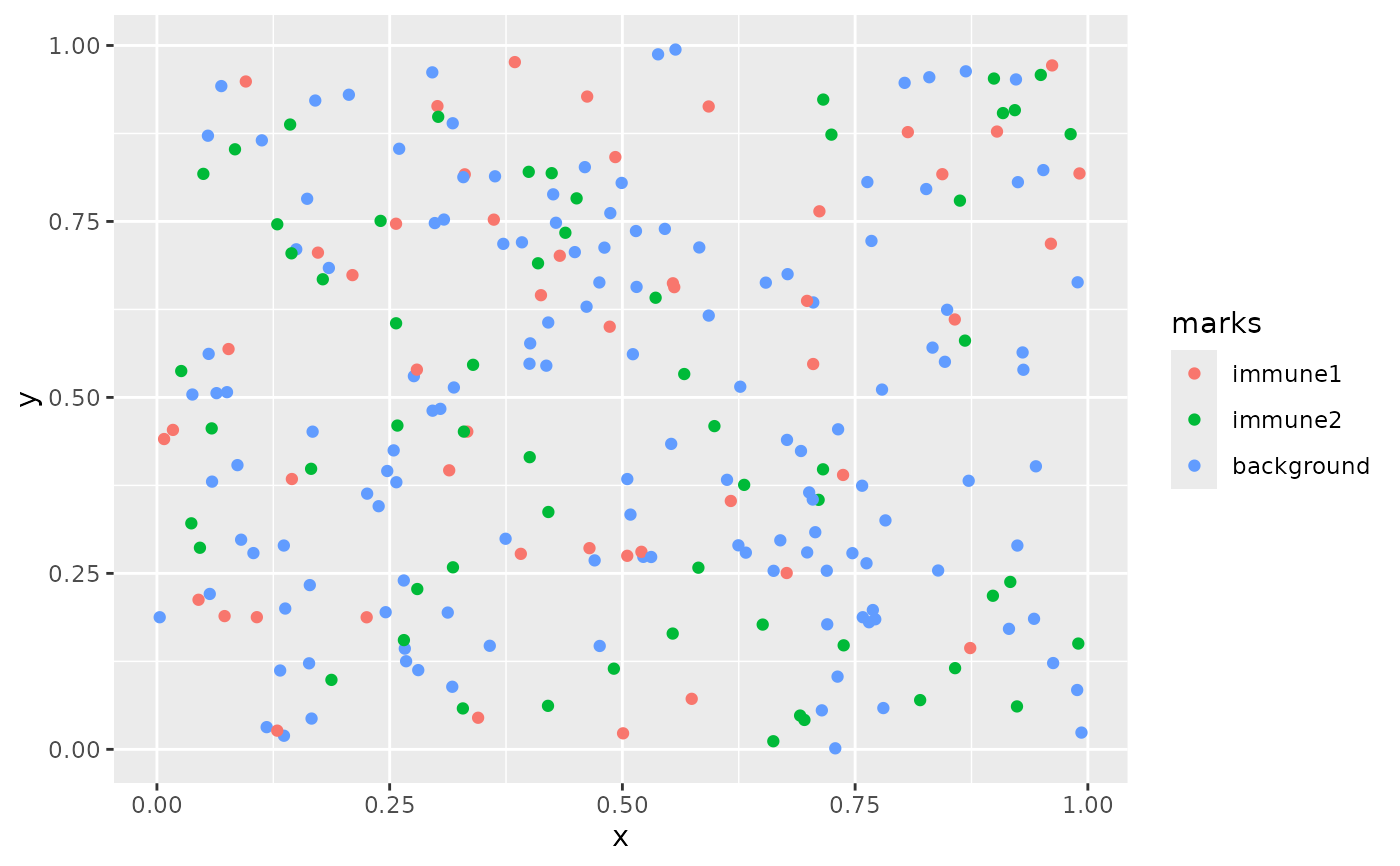Simulates bivariate point process data
sim_pp_data_biv.RdSimulates a spatial point pattern with three cell types: background, immune1, and immune2.
Usage
sim_pp_data_biv(
lambda_n,
abundance,
markvar1 = "immune1",
markvar2 = "immune2",
markvar3 = "background",
distribution = "hom",
clust = FALSE
)Arguments
- lambda_n
Number of total cells in image
- abundance
Percentage intensity for marker positive cells
- markvar1
Marker positive cell type (default is "immune1")
- markvar2
Marker positive cell type (default is "immune2")
- markvar3
Marker negative cell type (default is "background")
- distribution
Determines whether the image is homogeneous ("hom") or inhomogeneous ("inhom")
- clust
Determines whether an image is simulated with or without clustering (TRUE/FALSE)
Value
A point pattern object of class "ppp" from the spatstat package where the three cell types are background, immune1, and immune2.
Examples
if (requireNamespace("dplyr", quietly = TRUE) &&
requireNamespace("ggplot2", quietly = TRUE) &&
requireNamespace("tibble", quietly = TRUE) &&
requireNamespace("magrittr", quietly = TRUE)) {
pp_obj <- sim_pp_data_biv(lambda_n = 200, abundance = 0.3)
magrittr::`%>%`(
tibble::as_tibble(pp_obj),
ggplot2::ggplot(ggplot2::aes(x, y, color = marks))
) +
ggplot2::geom_point()
}
